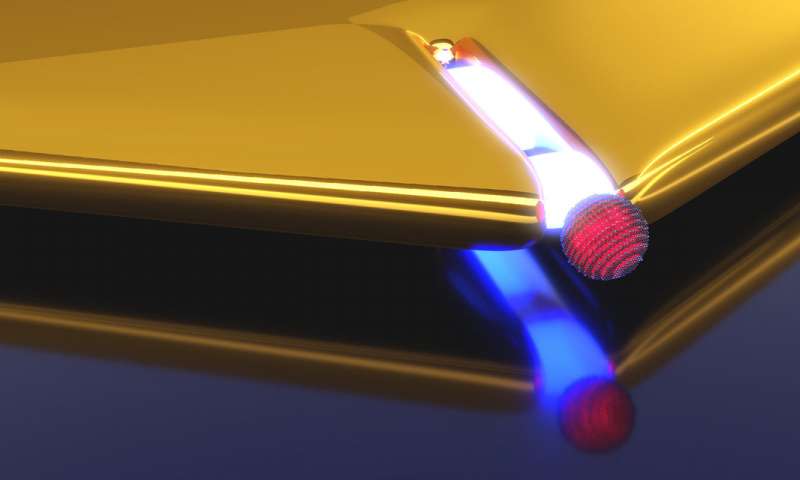Researchers from Würzburg and London have succeeded in controlling the coupling of light and matter at room temperature. They have published their results in Science Advances.
This achievement is particularly significant, as it builds the foundations for the realization of practical photonic quantum technologies. While many demonstrations of optical quantum processes require cryogenic temperatures to protect the quantum states, the present work elevates the quantum processes to room temperature and introduces controllability, which could contribute to the development of quantum computers.
A light particle (photon) is generated when an excited molecule or a quantum dot returns to its low-energy ground state. This process is known as spontaneous emission, and is usually irreversible, i.e. an emitted photon will not simply return to the emitter to be absorbed again.
But if the emitter is intimately coupled to an optical resonator, the emitted photon remains in the vicinity of the emitter for a sufficiently long period of time, considerably boosting its chances of reabsorption. “Such a reversal of spontaneous emission is of high importance for quantum technologies and information processing, as it facilitates the exchange of quantum information between matter and light while preserving the quantum properties of both,” says Professor Ortwin Hess of Imperial College.
Such an exchange of quantum information is, however, usually only possible at very low temperatures, which renders spectral lines of emitters sharply, and therefore increases the probability of absorption. The teams of professors Bert Hecht and Ortwin Hess have succeeded in achieving a state of strong coupling of light and a single quantum emitter at room temperature.
Find your dream job in the space industry. Check our Space Job Board »
To achieve the reabsorption of a photon at room temperature, the researchers used a plasmonic nanoresonator, in the form of an extremely narrow slit in a thin gold layer. “This resonator allows us to spatially concentrate the electromagnetic energy of a stored photon to an area not much larger than the quantum dot itself,” explains Professor Hecht’s co-worker Heiko Groß. As a result, the stored photon is reabsorbed with high probability by the emitter.
While similar ideas have already been implemented by other researchers in systems such as single molecules, in the current study, the researchers controlled the coupling between the resonator and the quantum emitter by implementing a method that allows them to continuously change the coupling and, in particular, to switch it on and off in a precise manner. The team achieved this by attaching the nano-resonator to the tip of an atomic force microscope. This way they are able to move it with nanometer precision within the immediate vicinity of the emitter—in this case, a quantum dot.
Building on their accomplishment, the researchers now hope to be able to controllably manipulate the coupling of the quantum dot and the resonator not only by changing their distance, but also through external stimuli—possibly even by single photons. This would result in unprecedented new possibilities for optical quantum computers.
“It is clearly a most useful feature that the exchange of energy between the quantum dot and the resonator happens extremely quickly,” says Groß. This solves a challenge of a low-temperature set-up: At very low temperatures, the oscillation of energy between light and matter is significantly slowed down by the long storage times of the resonator.
Provided by:
University of Würzburg
More information:
Heiko Groß et al, Near-field strong coupling of single quantum dots, Science Advances (2018). DOI: 10.1126/sciadv.aar4906
Image:
Artistic representation of a plasmonic nano-resonator realized by a narrow slit in a gold layer. Upon approaching the quantum dot (red) to the slit opening the coupling strength increases.
Credit: Heiko Groß











